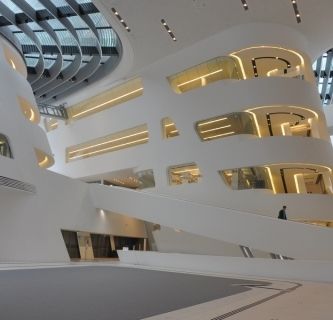A current study undertaken by the Institute of Construction Design and Economics on a life cycle approach to facade systems, and financed by the Styrian Economic Chamber (Construction Division), deals with the systematic recording of the processes which take place during the service life of exterior wall systems.
As buildings are being subjected to ever more demanding energy requirements, facade systems must be adapted accordingly. The research project was initiated in response to several facades demonstrating performance weaknesses during their life cycle.
An overview of the facade systems currently available in the Austrian market provided the basis for in-depth examinations and served to establish the breadth of the market. A further detailed examination investigated the quantities of insulation material used in order to demonstrate the market potential. Here the rising physical and energy demands over time play a key role, with insulation thicknesses having increased drastically over the past decade. The study investigated whether this leads to greater susceptibility to damage.
With the aid of several properties in Styria belonging to various housing cooperatives, this relationship was examined in order to generate reliable input data for use in a life cycle analysis. The results of this study demonstrate how facades commonly used in residential construction change over their life cycle, and at which point particular cleaning measures and repairs are required. This generates realistic values for use in life cycle calculations which can then be used when planning facades for both new construction and building renovations.










